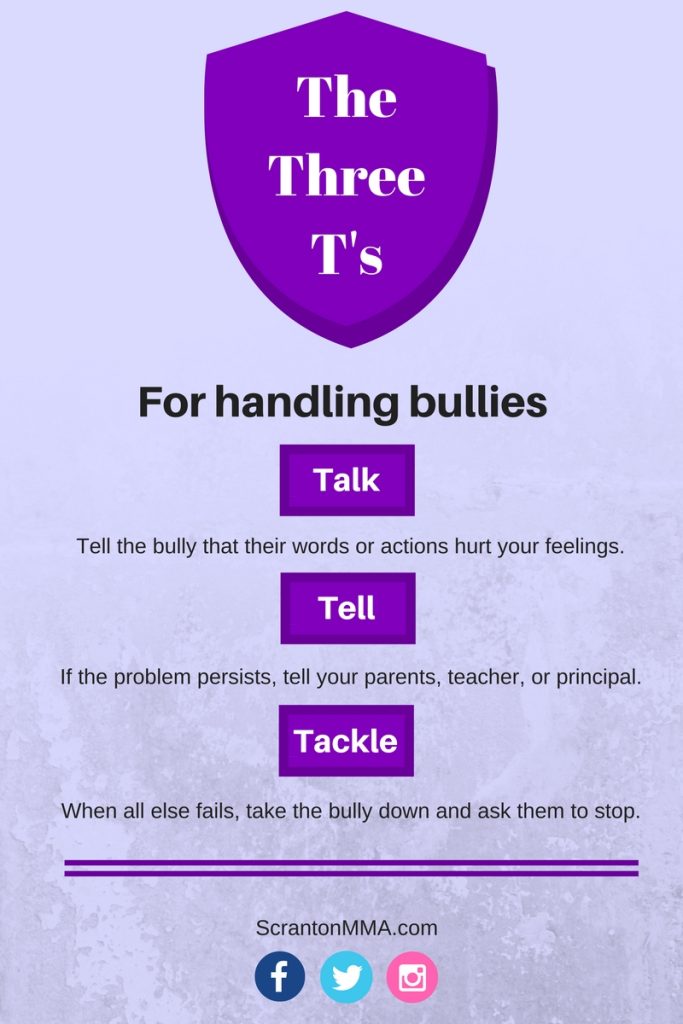With the new school year rolling in, there is a lot on parents’ minds.
- Does my child have enough pencils, notebooks, and folders?
- Did I remember to pack their lunch today?
- I wonder what kind of papers I’ll have to sign when they get home.
One thing that parents might forget to think about is bullying. Whether your child gets bullied, witnesses bullying, or is the bully, this is something that needs to be addressed as early as possible. It is important for parents to teach their kids how to communicate with bullies and how not to accidentally become one. Luckily, there is a simple three-step system for communicating with bullies, which will help your child understand the importance of the subject.

The Three T’s: Talk, Tell, Tackle.
The first T in this anti-bullying process is “talk.” The first time a child gets bullied, he or she should simply talk to the bully and let them know that their words or actions hurt them. Children can be brutally honest, and sometimes children simply do not know that what they’re saying is hurtful. The first T, talk, teaches kids how to have a conversation with someone about their differences. The problem can easily be nipped in the bud at this stage.
The second T is “tell.” Let’s say a bully walked up to your son and started making fun of his glasses. Your son did the right thing and spoke to the bully about how his words are hurtful, but the bully continually makes of your son’s glasses day after day. At this point, the right thing to do would be telling a trusted adult. This could be you (the parents), his teacher, the principal, or a school counselor. That adult can then mediate the issue and hopefully stop the hurtful words.
The third T is “tackle.” This may sound violent, but the real objective here is for your child to show the bully that he or she is in control of the situation. If the bully from the previous example continues making fun of your son’s glasses and begins physically pushing him or hitting him, we believe it is then okay to tackle. Tackling means taking the bully to the ground, sitting on top of him, and asking him to stop. Once your child establishes that he is not scared of the bully, the problem will most likely end.
The most important thing to take away from this is teaching your child not to retaliate with violence on the first offence. It’s important to teach them how to communicate with their words and have a conversation about differing opinions. The only time that it’s okay to skip “Talk” and “Tell” is if your child is being physically attacked. Then it is okay for he or she to go straight to “Tackle.”
And, there you have it. Although these three steps sound easy, it is something that children need to learn and practice. The best way to do that is going over it with them often and making sure they understand why they’re doing each step. If you would like more information about this, please contact our self defense instructors at Scranton MMA through our website, at ScrantonMMA@gmail.com, or at 570-851-2987.
